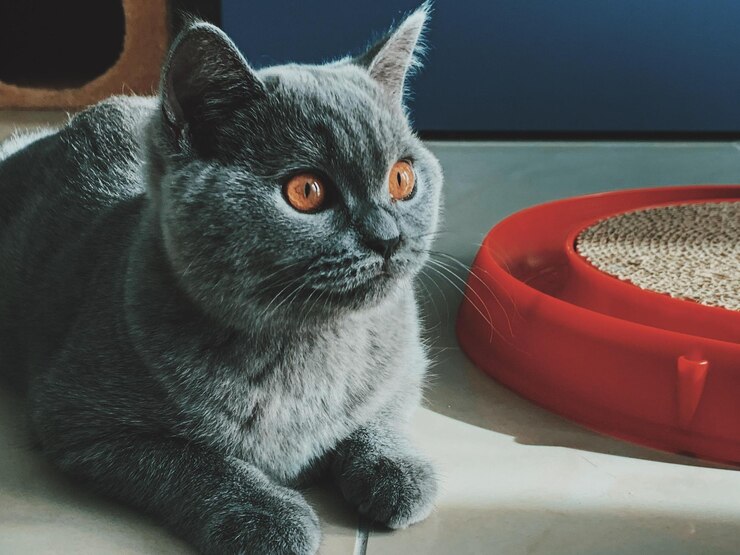Is your cat avoiding the litter box, or are you noticing unpleasant odors around the house? You might be surprised to learn that how often you change the litter box plays a crucial role in your cat’s bathroom habits.
Cats are naturally clean animals, and they can be quite particular about their bathroom environment. Regularly changing the litter not only keeps your home smelling fresh but also encourages your cat to use the box consistently. Understanding the best practices for litter box maintenance can make a significant difference in your cat’s behavior and overall comfort.
Imagine a home where your cat happily uses the litter box without any issues, and you never have to worry about odors or accidents. By knowing how often to change the litter, you can create a clean and inviting space that both you and your feline friend will appreciate.
So, how often should you change the litter in your cat’s box? Keep reading to discover the best practices for maintaining a clean litter box and ensuring your cat’s happiness!
How Often Should You Change Cat Litter?
1. Daily Scooping
Daily scooping is vital for maintaining a clean litter box and ensuring your cat feels comfortable using it. Cats prefer a tidy bathroom, and a dirty litter box can lead to them avoiding it, resulting in accidents around the house. By scooping out clumps of waste and soiled litter each day, you create a fresh and inviting space, encouraging your cat to use the box consistently.
Read Why Is My Cat Peeing Outside the Litter Box?
Moreover, daily scooping helps reduce odors and prevents the buildup of harmful bacteria and ammonia that can occur from accumulated waste. These substances can pose health risks to your cat, including urinary tract infections. Keeping the litter box clean minimizes these risks and promotes a healthier environment.
2. Complete Litter Change
A complete litter change is essential for keeping your cat’s litter box hygienic and inviting. It should be done approximately once a week, although this may vary based on the number of cats you have and the type of litter used. During a complete change, you should empty the entire litter box, thoroughly clean it with a mild detergent or vinegar solution, and then add fresh litter.
This process removes all waste and odors that daily scooping might miss, ensuring a fresh environment for your cat. A clean litter box encourages regular use and prevents potential behavioral issues, such as avoiding the box or developing negative associations with it.
In multi-cat households, more frequent changes may be necessary. If you notice stronger odors or increased waste, consider changing the litter every five days. This proactive approach helps maintain a pleasant atmosphere and reduces the risk of health problems associated with unsanitary conditions.
Choosing the right type of litter can also impact how often you need to perform a complete change. Clumping litters typically make it easier to keep the box clean, while non-clumping varieties may require more frequent full changes.
3. Adjusting for Multiple Cats
When you have multiple cats, managing their litter boxes requires special attention to ensure each cat has access to a clean bathroom. The general guideline is to have one litter box per cat plus one extra. This means if you have four cats, you should have five litter boxes available. This setup helps to minimize territorial disputes and ensures that all cats have a clean space to use, which is crucial for their comfort and bathroom habits.
Read Why Is My Cat Pooping Outside the Litter Box?
With multiple cats, you may need to adjust your cleaning routine. It’s advisable to scoop the litter boxes at least twice a day to keep them fresh and odor-free. In addition to daily scooping, a complete litter change should be done every few days, especially if you notice that the boxes are filling up quickly or if there are stronger odors.
Read Can a Dog Get a Cat Pregnant?
4. Watching for Signs
Cats communicate through their actions, and any changes in their litter box habits can indicate potential issues. If your cat starts avoiding the litter box, it may signal that the box is not clean enough, or there may be an underlying health problem that requires attention.
Pay attention to any signs of discomfort or stress when your cat approaches the litter box. For example, if they exhibit hesitation, meowing, or scratching at the box without using it, these behaviors can indicate a preference for a cleaner environment or a reluctance to share the space with other cats.
5. Consider the Type of Litter
The type of litter you choose plays a significant role in how often you need to change it and how effectively it controls odors. There are several types of litter available, each with its unique properties, and understanding these can help you make an informed decision that best suits your cat’s needs. Read Why Does My Cat Follow Me To The Bathroom
Clumping Litter: Clumping litter is designed to form solid clumps when it comes into contact with moisture, making it easier to scoop out waste. This type typically allows for more extended periods between complete changes since daily scooping can effectively remove waste and minimize odors. Clumping litter is popular for its convenience and effectiveness, making it a great choice for busy cat owners.
Non-Clumping Litter: Non-clumping litter absorbs moisture but does not form clumps. This type may require more frequent complete changes since waste can become embedded in the litter, leading to stronger odors. If you choose non-clumping litter, be prepared to change it more often—generally every few days, depending on the number of cats and their habits.
Natural or Biodegradable Litter: Options made from natural materials, such as wood pellets or corn, can be environmentally friendly and may control odors effectively. However, their absorbency and clumping abilities can vary, so it’s essential to monitor how often you need to change this type based on your cats’ usage.
Fragrance-Free Litter: Some cats may be sensitive to scents in litter, so fragrance-free options can be a better choice for sensitive felines. Choosing the right litter can reduce the likelihood of your cat avoiding the box due to unpleasant smells or discomfort.
Read



